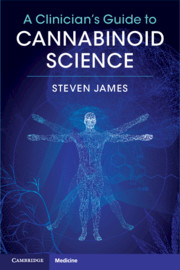Book contents
- A Clinician’s Guide to Cannabinoid Science
- Reviews
- A Clinician’s Guide to Cannabinoid Science
- Copyright page
- Dedication
- Contents
- Preface
- Section 1 An Introduction to Cannabinoid Science
- Section 2 Potential Therapeutic Uses of Cannabinoids in Clinical Practice
- Chapter 6 Cannabinoids and Pain
- Chapter 7 Cannabinoids and Neuropsychiatry
- Chapter 8 Cannabinoids in Sleep and Circadian Rhythms
- Chapter 9 Cannabinoids and Inflammation and Autoimmune Disorders
- Chapter 10 Cannabinoids and the Eye
- Chapter 11 Cannabinoids and the Skin
- Index
- References
Chapter 10 - Cannabinoids and the Eye
from Section 2 - Potential Therapeutic Uses of Cannabinoids in Clinical Practice
Published online by Cambridge University Press: 12 October 2020
- A Clinician’s Guide to Cannabinoid Science
- Reviews
- A Clinician’s Guide to Cannabinoid Science
- Copyright page
- Dedication
- Contents
- Preface
- Section 1 An Introduction to Cannabinoid Science
- Section 2 Potential Therapeutic Uses of Cannabinoids in Clinical Practice
- Chapter 6 Cannabinoids and Pain
- Chapter 7 Cannabinoids and Neuropsychiatry
- Chapter 8 Cannabinoids in Sleep and Circadian Rhythms
- Chapter 9 Cannabinoids and Inflammation and Autoimmune Disorders
- Chapter 10 Cannabinoids and the Eye
- Chapter 11 Cannabinoids and the Skin
- Index
- References
Summary
In this chapter we will review selected preclinical and clinical information for future development of cannabinoids in the treatment of the eye. Cannabinoids potentially hold great promise for future therapeutic uses, but the clinical knowledge remains too limited to arrive at positive recommendations at this time. Despite the anecdotal reports and interesting findings reported over the past few decades, the US Food and Drug Administration (FDA), Canada Health and the European Medicines Agency (EMA) have yet to approve any cannabinoid for use in the treatment of eye disease.
Information
- Type
- Chapter
- Information
- A Clinician's Guide to Cannabinoid Science , pp. 125 - 136Publisher: Cambridge University PressPrint publication year: 2020
References
Accessibility standard: Unknown
Why this information is here
This section outlines the accessibility features of this content - including support for screen readers, full keyboard navigation and high-contrast display options. This may not be relevant for you.Accessibility Information
- 1
- Cited by
